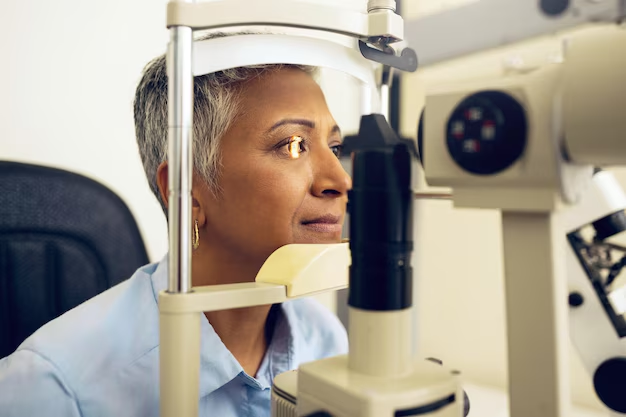Understanding the Relationship Between Cataracts and Nuclear Sclerosis
If you’ve ever worried about your vision as you age, you’re not alone. One of the common concerns that come up in discussions about eye health involves cataracts and nuclear sclerosis. Have you ever wondered if these conditions are the same or how they relate to each other? This article delves deep into these eye conditions, explaining their distinctions and connections, supporting you with a clearer understanding of what they mean for your vision health.
What Are Cataracts?
Cataracts develop when the clear lens of the eye becomes cloudy or opaque, leading to impaired vision. This condition is primarily age-related, affecting millions of people worldwide, making it one of the leading causes of vision impairment.
Causes of Cataracts
The primary culprits for cataracts are age-related changes in the eyes, which can lead to the following:
- Protein Clumping: Over time, proteins in the eye lens can clump together, causing cloudiness.
- Oxidative Stress: Free radicals can damage proteins and fibers in the eye lens.
Other contributing factors include:
- UV exposure
- Smoking
- Diabetes
- Long-term steroid use
Cataracts Symptoms
Recognizing the signs of cataracts is crucial for early detection and management. Common symptoms include:
- Blurry or cloudy vision
- Difficulty seeing at night
- Increased sensitivity to glare
- Fading or yellowing of colors
- Frequent prescription changes in glasses or contact lenses
What Is Nuclear Sclerosis?
Nuclear sclerosis is a specific type of cataract, and its name refers to the hardening (sclerosis) and clouding (nuclear) of the central zone of the lens called the nucleus. This process typically occurs naturally as part of the aging process.
Causes of Nuclear Sclerosis
Similar to general cataracts, nuclear sclerosis arises due to the aging process, with contributing factors being:
- Protein changes in the nucleus of the eye lens
- Accumulated oxidative damage
Symptoms of Nuclear Sclerosis
While nuclear sclerosis shares several symptoms with cataracts, certain signs are more specific to this type:
- Gradual yellowing and hardening of the lens
- A slow but steady decline in vision clarity
- Changes in color hue perception
How Are Cataracts and Nuclear Sclerosis Related?
When exploring whether cataracts are the same as nuclear sclerosis, it's essential to understand that nuclear sclerosis is a form of cataract. While all nuclear sclerosis is cataracts, not all cataracts are nuclear sclerosis. Cataracts can take various forms, each affecting different parts of the lens in unique ways.
Types of Cataracts
- Nuclear Cataracts: Affecting the center of the lens, often leading to difficulty distinguishing between certain colors.
- Cortical Cataracts: Affecting the edges of the lens and typically leading to light sensitivity.
- Posterior Subcapsular Cataracts: Developing at the back of the lens, impacting reading vision and causing glare around lights.
Diagnosing Eye Conditions
Early diagnosis is critical for effective management of any eye condition. Regular eye check-ups can help monitor changes in vision and address concerns promptly.
Eye Examination
An eye exam may involve:
- Visual Acuity Test: Checking your ability to see letters and shapes at a distance.
- Slit-Lamp Examination: A detailed view of the eye structures, using a microscope.
- Retinal Exam: Observing the condition of the retina to check for abnormalities.
Managing Cataracts and Nuclear Sclerosis
While lifestyle changes and preventive measures can help, managing cataracts usually requires medical intervention, particularly when vision impairment affects daily activities.
Lifestyle Measures
- Protect Your Eyes: Use sunglasses that block UV rays to prevent cataract progression.
- Healthy Diet: Consume a diet rich in antioxidants and vitamins such as A, C, and E.
- Avoid Smoking: Smoking accelerates cataract development and can exacerbate nuclear sclerosis.
Medical Treatments
When cataracts or nuclear sclerosis significantly impair vision, cataract surgery is often recommended. This surgical procedure involves:
- Removing the cloudy lens
- Replacing it with an artificial intraocular lens (IOL)
The Future of Eye Health
Advancements in medical technology offer promising treatments and preventive measures for those suffering from cataracts and nuclear sclerosis. Continuing education and awareness are essential for understanding and managing eye health as part of an overall health strategy.
Key Takeaways
- Nuclear Sclerosis is a Type of Cataract: Not all cataracts are nuclear sclerosis. Understand which type affects you.
- Regular Eye Exams Are Vital: Early detection can significantly aid in managing eye conditions effectively.
- Lifestyle Choices Matter: Diet and habits can influence the speed and severity of cataract progression.
- Surgery Offers a Solution: Cataract surgery is safe and effective, often restoring vision affected by nuclear sclerosis.
By understanding these distinctions and taking proactive steps, you can maintain better eye health and clearer vision well into the future. Trust in the process of regular check-ups and expert advice to safeguard one of your most valuable senses—sight. 🕶️🔍
Summary Table: Eye Health and Understanding Cataracts
| Topic | Key Points |
|---|---|
| Cataracts Overview | Common vision impairment caused by lens cloudiness. |
| Nuclear Sclerosis | A type of cataract involving hardening and clouding of the lens. |
| Diagnosis | Eye exams are essential for identifying and managing conditions. |
| Management | Lifestyle changes and surgery can manage cataract impact. |
| Preventive Tips | Protect eyes from UV, maintain a healthy diet, avoid smoking. |
Remember to prioritize your eye health by seeking professional advice and maintaining regular check-ups. 😊👀

Related Articles
- Are Cataracts Curable
- Are Cataracts Genetic
- Are Cataracts Hereditary
- Are Cataracts Painful
- Are Ivizia Eye Drops Okay After Cataract Surgery
- Are You Awake During Cataract Surgery
- Are You Awake For Cataract Surgery
- Are You Put To Sleep For Cataract Surgery
- Are You Sedated For Cataract Surgery
- Can a Cataract Cause Double Vision